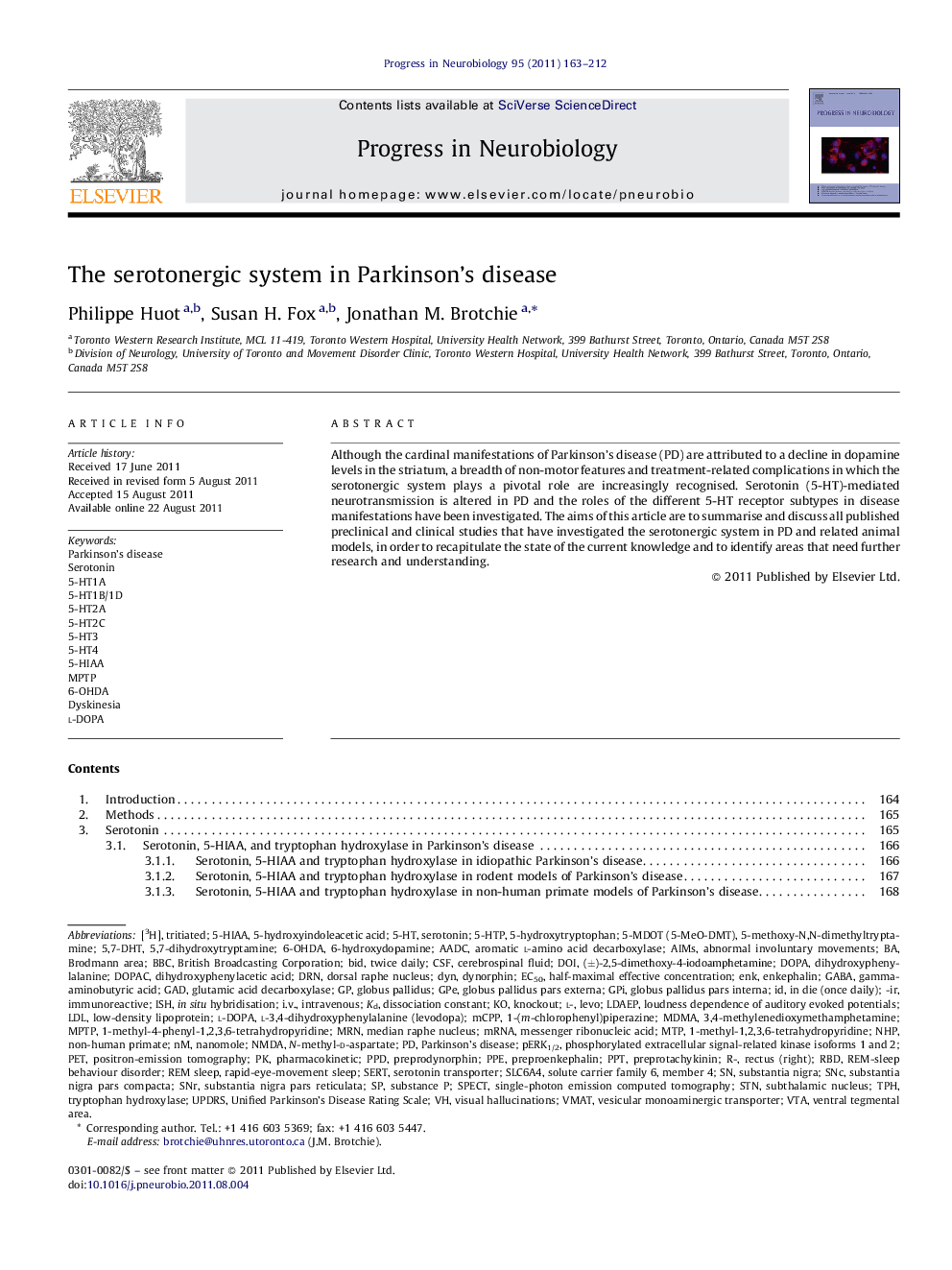| Article ID | Journal | Published Year | Pages | File Type |
|---|---|---|---|---|
| 4353534 | Progress in Neurobiology | 2011 | 50 Pages |
Although the cardinal manifestations of Parkinson's disease (PD) are attributed to a decline in dopamine levels in the striatum, a breadth of non-motor features and treatment-related complications in which the serotonergic system plays a pivotal role are increasingly recognised. Serotonin (5-HT)-mediated neurotransmission is altered in PD and the roles of the different 5-HT receptor subtypes in disease manifestations have been investigated. The aims of this article are to summarise and discuss all published preclinical and clinical studies that have investigated the serotonergic system in PD and related animal models, in order to recapitulate the state of the current knowledge and to identify areas that need further research and understanding.
► Raphestriatal serotonergic neurons play a critical role in the pathophysiology of l-DOPA-induced dyskinesia. ► There is a relation between reduced 5-HT and mood disorders in PD. ► 5-HT1A receptor agonists reduce l-DOPA-induced dyskinesia severity, but potentially worsen parkinsonism. ► 5-HT2A receptor antagonists can reduce both l-DOPA-induced dyskinesia and non-motor complications such as psychosis. ► 5-HT2C receptor antagonists could provide an anti-parkinsonian benefit or enhance the efficacy of dopamine replacing therapies, but could exacerbate dyskinesia severity.
